Filtered By: Lifestyle
Lifestyle
Masagana 99, Nutribun, and Imelda's 'edifice complex' of hospitals
As the country marks the 40th anniversary of the declaration of martial law this week, GMA News Online looks at the health and wellness aspects of those dark years, when specialty hospitals flourished while famine stalked impoverished rural villages. 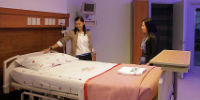

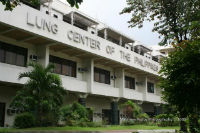


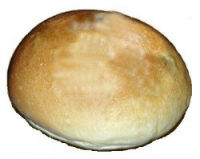
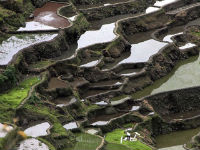

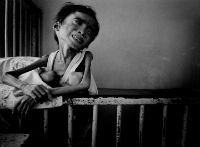
If there’s one legacy that people remember fondly from the martial law era, it’s the network of designer hospitals built by former First Lady Imelda Marcos, who wanted nothing but “the true, the good, and the beautiful” even in healthcare.
She managed to build them through the support of her husband, strongman Ferdinand Marcos, who ruled by presidential decree and easily turned Imelda’s vision into reality.
It all began on Valentine's Day in 1974, when former Minister of Health and then-director of the Quezon Institute Dr. Enrique M. Garcia sought assistance from Imelda to rehabilitate the hospital, which catered to poor patients suffering from tuberculosis. Imelda offered support, but expressed her wish to put up specialty medical institutions, including a Lung Center, according to the hospital’s website.
By now, they’ve all seen better days, but these hospitals remain an essential component of specialized medical care in the country.
Philippine Heart Center

Photo from Philippine Heart Center
At the lobby of the imposing structure on East Avenue in Quezon City, National Artist Vicente Manansala's painting “Inang Bayan” is dedicated to Imelda. The center was finished in record time, because the First Lady wanted the building to be inaugurated on Valentine's Day, Gerard Lico wrote in “Edifice Complex: Power, Myth, and Marcos State Architecture.”
Inaugurated on February 14, 1975, the Heart Center was established through Presidential Decree No. 673 to provide comprehensive cardiovascular care.
The hospital has thrived through the years, and it is recognized as one of the busiest congenital heart surgery centers in Asia, according to the Quezon City government website.
Philippine Children's Medical Center

Photo from Philippine Children's Medical Center
Ever wondered how to get your kids to drink medicine? Or the do’s and dont’s of hospital visits? These are some of the resources available on the center’s website.
Established in 1979, the children’s center, as it is popularly known, was envisioned to be the premier pediatric tertiary healthcare facility in the country. It is also a specialized center for clinical research, focusing on common causes of morbidity and mortality among Filipino children.
Although it looked great during the Marcos era, the years have caught up with the children’s center. In 2009, the graduating batch of the University of the Philippines (UP) Interior Design came up with The Cradle Project, replacing deteriorated facilities and brightening up the depressing interiors in six of the center's outpatient sections.
Lung Center of the Philippines

Photo from Lung Center of the Philippines
Established through Presidential Decree No. 1823 on January 16, 1981, the Lung Center was created to provide state-of-the-art specialized care for lung and other chest diseases.
Until today, the hospital’s website extols the role of Imelda and Dr. Garcia in its creation: “It may be claimed that the Center had a vision and history that belonged to a gracious lady and a dedicated surgeon who devoted his last few years in making a dream come true.”
Fire gutted much of the hospital in 1998, however, setting back its plans. In 2011, the government of President Benigno Aquino III approved a budget of P700 million for badly needed upgrades for the Lung Center, the Heart Center, and the children’s center.
National Kidney and Transplant Institute

Photo from National Kidney and Transplant Institute
Formerly known as the National Kidney Foundation of the Philippines (NKFP), the center was created by virtue of Presidential Decree 1932. Imelda, then the NKFP chair, laid the cornerstone of the building on February 23, 1983.
“Under the directorship of Dr. Claver P. Ramos, NKFP embarked on an ambitious kidney transplant project which was made available to all patients from all over the country regardless of social status,” according to its website.
Its milestones include the first liver transplant in the Philippines and the first double transplant in Asia in 1988, and the first combined kidney and liver transplant in Asia in 1990. In recent years, however, the hospital has faced allegations of involvement in questionable kidney donation practices and organ trafficking.
Population and nutrition
The Marcoses’ health agenda extended to other aspects including family planning and nutrition, with mixed results and amusing anecdotes.
POPCOM

Photo from Commission on Population
With his draconian powers, Marcos did not have to contend with opposition from the Catholic church when he did what today’s advocates of the Reproductive Health bill are wishing Congress would do: in December of 1972, Marcos signed Presidential Decree 79 or the Revised Population Act.
The law created the Commission on Population or POPCOM, which was mandated “to make available all acceptable methods of contraception, except abortion, to all Filipino citizens desirous of spacing, limiting or preventing pregnancies.”
Today, POPCOM is attached to the Department of Health and is responsible for implementing the Responsible Parenthood and Family Planning program, which promotes natural family planning, birth spacing, and breastfeeding.
Nutribun

Photo from Nutribun.weebly.com
Developed in the early ‘70s, this bread was formulated by local bakeries from a blend of local and donated ingredients, and distributed in elementary school feeding programs as a ready-to-eat complete meal, according to a paper from the United States Agency for International Development (USAID) Mission in Manila.
During the disastrous floods in Central Luzon of 1972, bags filled with Nutribuns were stamped “Courtesy Imelda Marcos-Tulungan project” even though they were donations, according to Nancy Dammann, who spent 17 years with USAID as a Communications Media Advisor.
"The wives of several American officials helped package rice and nutribuns (a horrible bun made with high-vitamin, milk-content flour invented by an AID official and donated by USAID) for distribution to flood victims,” Dammann wrote in her book, ‘My 17 Years With USAID: The Good and the Bad.’
Masagana 99

GMA News
The Philippine version of the international movement Green Revolution, a campaign for food self-sufficiency, this program was launched in May 1973 with the goal of producing 99 sacks of rice per hectare, Mike Billington wrote in the Executive Intelligence Review.
Imelda also started a seed distribution project that encouraged all families to plant malunggay, papaya, guava or avocado, and banana, according to a paper written by USAID Nutrition Advisor R.W. Engel.
However, Katherine Ellison wrote in ‘Imelda: Steel Butterfly of the Philippines’ how some Filipinos “angrily noted the source of the Green Revolution's funds: two million pesos from the sale of Japanese rice donated to typhoon victims, and five million from the Department of Agriculture.”
Golden kuhol

Photo from Applesnail.net
In the early ‘80s, the Marcos government introduced the attractive apple snail or golden kuhol in the Philippines to augment the protein needs of the population.
However, what was intended as a nutritional supplement became a nightmare for farmers, as the snails became pests in rice fields. They multiplied rapidly, eating up harvests faster than they could be consumed, which was not much as most Filipinos did not take a liking to the golden kuhol as the government had hoped.
When he became governor of Ilocos Norte, Ferdinand “Bongbong” Marcos Jr. allotted P2 million to unleash an army of ducks in his province to control the pests that his father had brought to the country, Marcos loyalist Sol Jose Vanzi reported.
Negros famine

Photo from RevolutionRevisited.com
The flip side to all the spanking new hospitals and widely publicized food programs was the scourge of malnutrition and lack of health services in rural areas.
In 1985, a child named Joel Abong became the symbol of poverty in the country when a photograph showing his emaciated frame, not unlike the ones often seen in stories about famine in Africa, was widely disseminated.
Abong was one of the children in the island of Negros, where “at least 190,000 sugar workers lost their jobs, affecting 1 million dependents–half of Negros' population of 2 million,” wrote Michael F. Scott, former overseas director of Oxfam America, in the Los Angeles Times in 1987. “Every fifth child on the island under the age of six in 1986 was found to be seriously malnourished,” he noted.
With social services in the provinces sorely lacking, community workers relied on the book ‘Where there is no doctor,’ which became their bible on primary health care. Social activists also carried a bottle of Polar bear embrocation in their backpacks as a cure-all for a host of ailments. – With reports from Carmela G. Lapeña and Yasmin D. Arquiza/KG, GMA News
More Videos
Most Popular



